Cat acne, though a common issue in feline health, poses a multifaceted challenge for pet owners. The factors triggering its onset range from dietary allergies to stress-related stimuli, necessitating a nuanced approach to management.
Recognizing the symptoms and refraining from hasty interventions is crucial in addressing this dermatological concern effectively.
As we explore the causes and potential remedies for cat acne, the intricate interplay between environmental triggers and treatment modalities unveils a complex yet manageable landscape awaiting further exploration.
Key Takeaways
- Cat acne can be caused by factors like overactive sebaceous glands and stress.
- Symptoms include blackheads, red bumps, and discomfort in chin and lip areas.
- Treatments range from topical options to dietary changes and complementary therapies.
- Prevention involves good grooming habits, clean bowls, and identifying allergies.
Understanding Cat Acne Causes
Cat acne is typically triggered by various factors, including food or environmental allergies, stressors like moving or new pets, poor grooming habits, bacterial overload, and viral infections affecting the respiratory system. These elements can disrupt the delicate balance of a cat's skin, leading to the formation of black crusts, scabs, and blackheads, as well as red bumps and pimples.
It's crucial to address these underlying causes to effectively manage and prevent cat acne. By identifying and mitigating these triggers, such as ensuring a clean environment, reducing stressors, and providing proper grooming care, cat owners can help their feline companions maintain healthy and clear skin. Understanding these causes is the first step towards resolving cat acne and promoting overall well-being for our beloved pets.
Identifying Signs of Cat Acne
Recognizing the signs of feline acne involves observing distinct skin abnormalities that manifest in specific areas on a cat's face and neck. Look out for black crusts, scabs, blackheads, red bumps, and pimples. Additionally, be wary of secondary bacterial infections that may arise, causing swollen, thickened skin and lips.
The affected areas typically include the chin, lower, and upper lips. Regularly inspecting your cat's facial hygiene can help in early detection and prompt treatment. If you notice any of these signs, it's essential to consult a veterinarian for proper diagnosis and management to prevent further complications.
Early intervention plays a crucial role in effectively addressing cat acne and ensuring your feline friend's skin health.
Risks of Popping Cat Acne
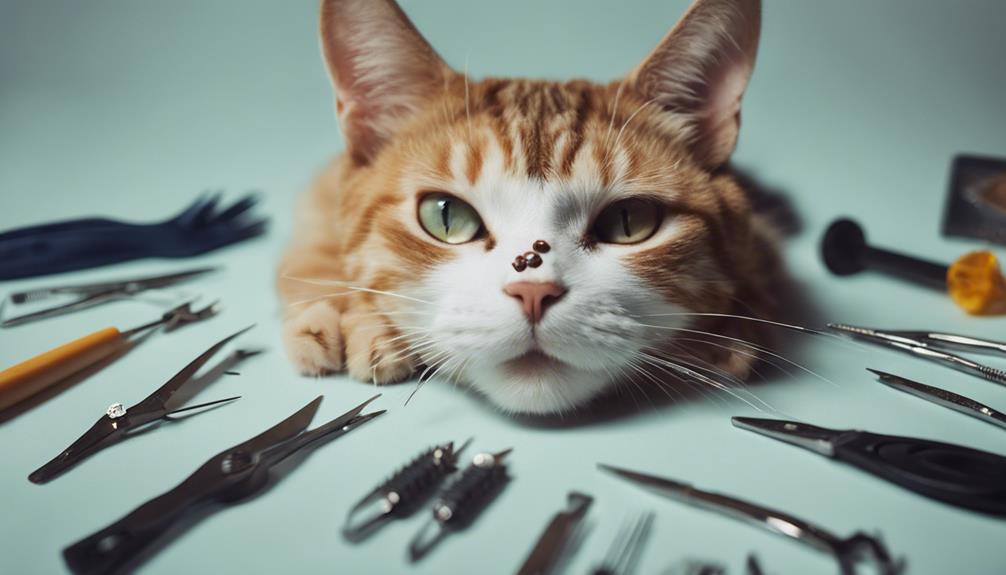
The act of popping acne lesions in cats can pose significant risks to their skin health and overall well-being. While it may be tempting to squeeze or pop pimples on your furry friend, doing so can lead to complications such as deeper infections and increased pain for the cat. Instead of resorting to popping, it is essential to seek alternative methods to manage cat acne effectively. Below is a table illustrating the risks associated with popping cat acne:
| Risk | Consequence | Prevention |
|---|---|---|
| Deeper infections | Spread of bacteria | Avoid popping pimples |
| Increased pain | Discomfort for the cat | Seek veterinary advice |
| Scarring | Permanent skin damage | Use gentle treatments |
Home Remedies for Cat Acne
When addressing cat acne at home, implementing gentle and effective remedies can aid in managing the condition without resorting to risky practices like popping pimples.
One home remedy is to switch to glass, ceramic, or steel bowls to prevent bacterial overload on your cat's chin. Clean these bowls daily with hot water and soap to maintain hygiene.
For hairless cats, using medicated wipes can help keep the affected areas clean. Avoid harsh treatments like benzoyl peroxide and always follow your vet's advice when using over-the-counter products.
Types of Cat-Friendly Bowls
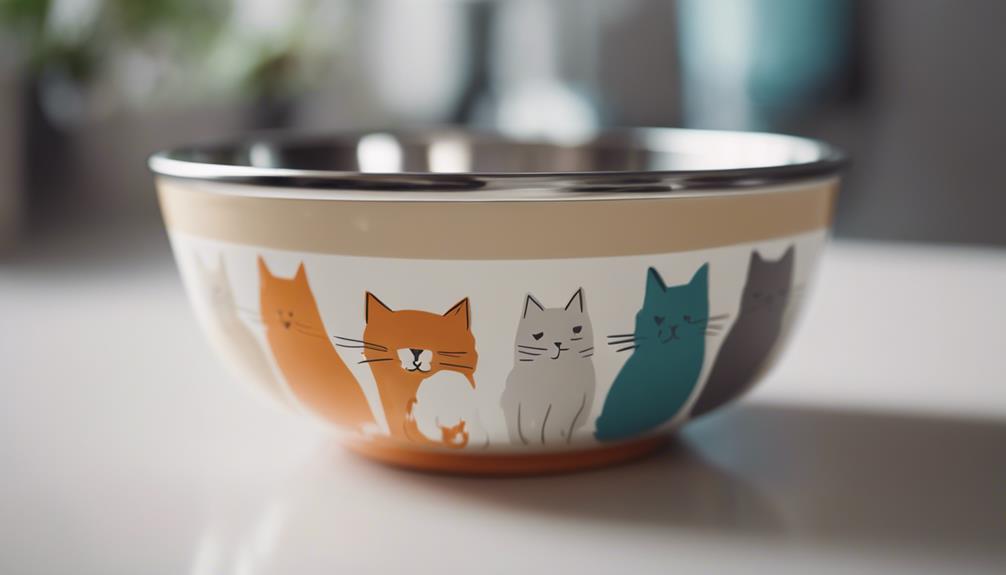
- Glass: Easy to clean and non-porous, reducing bacterial growth.
- Ceramic: Durable and stable, preventing tipping during mealtime.
- Stainless Steel: Resistant to scratches and dishwasher safe for convenience.
Cleaning Bowls to Prevent Acne
Proper maintenance of food bowls is crucial in preventing cat acne outbreaks. By ensuring that your cat's feeding dishes are clean and bacteria-free, you can significantly reduce the risk of acne development. Regular cleaning of food bowls with hot water and soap is essential to prevent bacterial overload, a common trigger for cat acne. Here is a helpful guide on how to clean your cat's bowls effectively:
| Cleaning Method | Frequency | Additional Tips |
|---|---|---|
| Hot water and soap | Daily | Use mild soap to avoid residue buildup |
| Vinegar and water solution | Weekly | Rinse thoroughly after cleaning |
| Dishwasher safe bowls | As needed | Check manufacturer's instructions |
Medicated Wipes for Hairless Cats
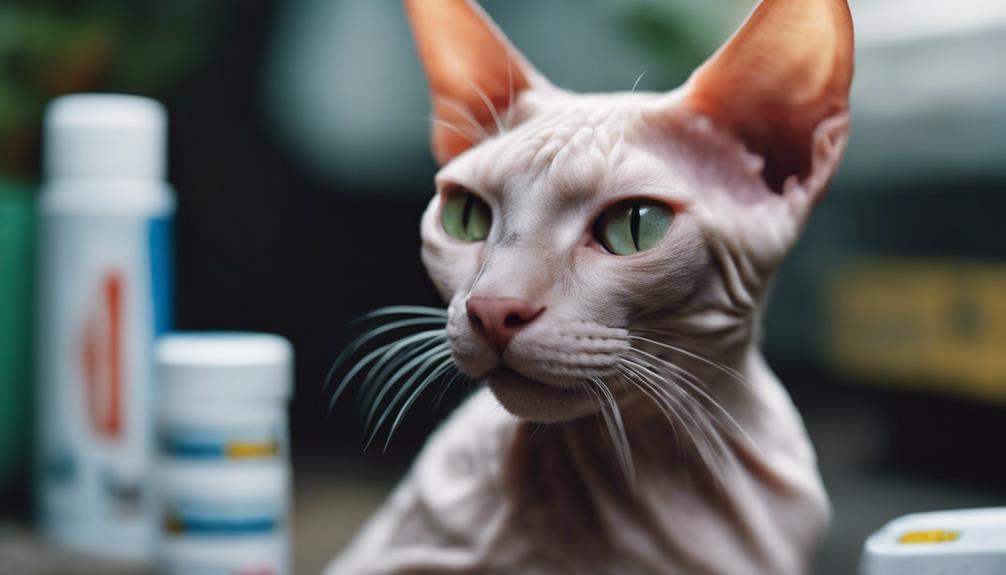
For hairless cats with cat acne, utilizing medicated wipes can be an effective method for maintaining skin hygiene and addressing skin issues.
- Gentle Cleansing: Medicated wipes are designed to gently cleanse the affected areas without causing irritation, making them ideal for sensitive skin.
- Anti-inflammatory Properties: These wipes often contain ingredients with anti-inflammatory properties that can help reduce redness and swelling associated with cat acne.
- Convenience: Using medicated wipes is a convenient way to target specific areas of concern on hairless cats, allowing for easy application and precise treatment.
Gentle Skincare for Cat Acne
Implementing a gentle skincare routine is crucial in managing cat acne to alleviate symptoms and promote skin health. A gentle approach involves using mild, non-irritating products that are safe for feline skin. Here is a helpful table to guide you in creating a gentle skincare routine for your cat:
| Skincare Step | Description |
|---|---|
| Cleansing | Use a gentle, unscented cleanser to wash the affected areas. |
| Moisturizing | Apply a hypoallergenic moisturizer to keep the skin hydrated. |
| Spot Treatment | Use a vet-approved acne spot treatment for targeted care. |
| Sun Protection | Avoid prolonged sun exposure to prevent skin damage. |
| Regular Check-ups | Monitor your cat's skin condition and consult a vet if needed. |
Seeking Professional Help
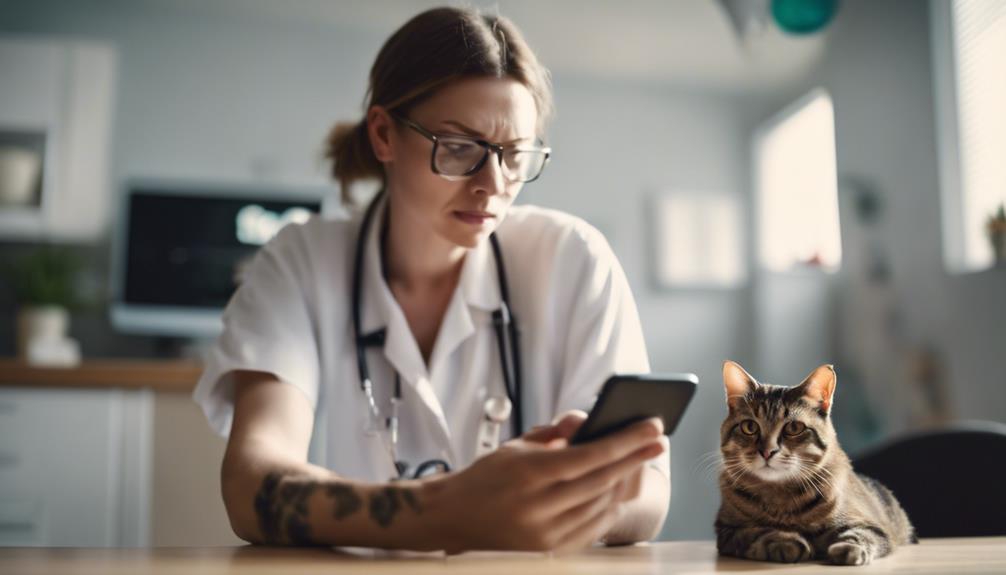
When gentle skincare measures prove insufficient in managing cat acne, consulting a veterinary professional becomes imperative to address more severe cases and explore advanced treatment options. While home remedies can help mild cases, professional intervention may be necessary for persistent or worsening conditions. Seeking expert guidance ensures a comprehensive approach to your cat's acne problem, focusing on both symptom management and long-term prevention strategies.
Veterinarians possess the knowledge and resources to tailor treatment plans to your cat's unique needs, offering specialized care that goes beyond what can be achieved at home. Professional assistance can make a significant difference in resolving cat acne effectively and improving your feline companion's skin health.
- Comprehensive evaluation of the cat's overall health
- Advanced diagnostic tests to identify underlying causes
- Tailored treatment plans for specific acne severity
Medications for Severe Cases
In cases of severe cat acne, veterinary professionals may recommend specific medications tailored to address the underlying causes and effectively manage the condition. These medications may include antibiotics to combat bacterial infections and reduce inflammation.
Topical ointments containing ingredients such as benzoyl peroxide or chlorhexidine can help cleanse the affected areas and promote healing. In more severe cases, corticosteroids may be prescribed to alleviate swelling and discomfort.
It is essential to follow the veterinarian's instructions carefully when administering these medications to ensure the best possible outcome for your feline companion. Additionally, ongoing monitoring and follow-up appointments may be necessary to track progress and adjust the treatment plan as needed.
Surgical Interventions for Cat Acne
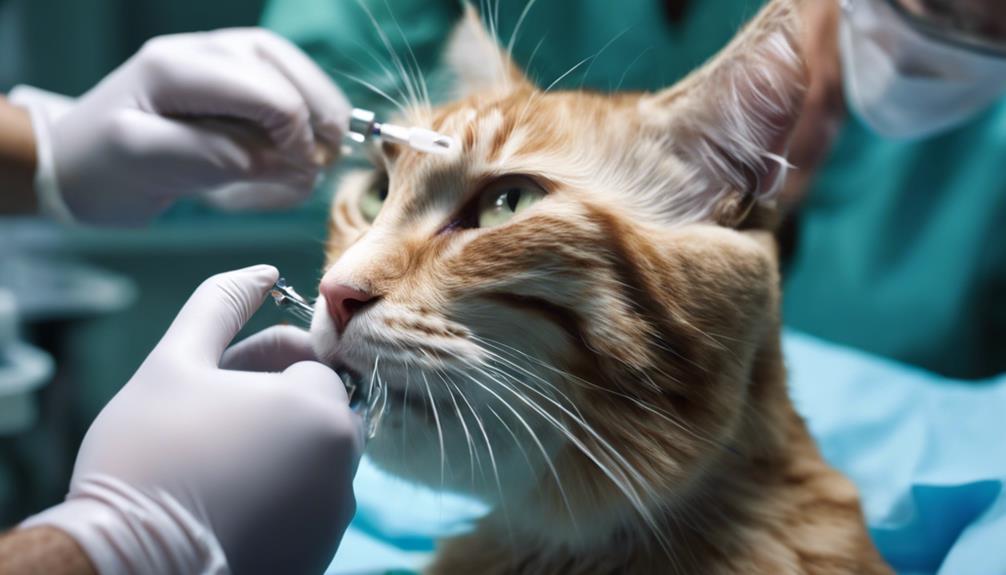
Surgical interventions can be considered in advanced cases of cat acne where conventional treatments have proven ineffective in alleviating the condition. In such cases, the following options may be explored:
- Laser Therapy: Targeted laser treatment can help reduce inflammation and kill bacteria, promoting healing.
- Cryosurgery: Freezing techniques can be used to remove stubborn acne lesions and prevent recurrence.
- Surgical Drainage: In cases of abscess formation, surgical drainage may be necessary to remove pus and promote healing.
These surgical interventions should only be performed by qualified veterinary professionals to ensure the safety and well-being of the cat. It is crucial to discuss the risks and benefits of these procedures with your veterinarian to make an informed decision regarding your cat's treatment plan.
Preventing Future Cat Acne
To prevent future occurrences of cat acne, proactive measures must be taken to address potential triggers and maintain proper hygiene practices.
Start by identifying and eliminating any food or environmental allergies that could be contributing to your cat's acne. Reduce stress triggers such as moving or introducing new pets gradually. Encourage good grooming habits, especially in older cats, to prevent bacterial overload from dirty bowls.
Opt for glass, ceramic, or steel bowls that are cleaned daily with hot water and soap. Use medicated wipes for hairless cats and avoid harsh benzoyl peroxide treatments. Follow your vet's advice on suitable over-the-counter products.
Conclusion
In conclusion, cat acne is a common dermatological issue in felines that can be triggered by various factors such as allergies and stress. Recognizing the signs of cat acne and seeking appropriate treatment is crucial for maintaining your pet's skin health.
Like a vigilant guardian, pet owners can proactively protect their feline companions from the discomfort and complications associated with cat acne.




